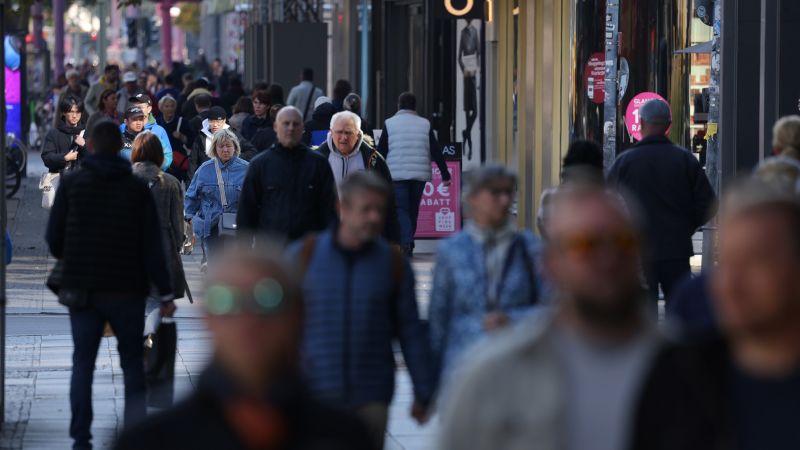Inflation isn’t going anywhere. Just look at the latest data from Europe | CNN Business
London
CNN Business
—
European inflation has accelerated to a new record high as energy and food prices in the region continue to skyrocket.
Prices across the 19 countries that use the euro increased at an annual rate of 10.7% in October, up from 9.9% in September, according to initial estimates released Monday.
Energy prices jumped by nearly 42% year-over-year, while the cost of food, alcohol and tobacco increased by more than 13%.
Notably, prices in the services sector climbed at a faster rate in October than in September. That’s a worrying sign for policymakers who had hoped that easing supply chain pressures would help bring inflation down.
Inflation in Germany, Europe’s biggest economy, shot up to 11.6%. In Italy, it rose to 12.8%, while France’s rate climbed to 7.1%. US consumer price inflation, by comparison, was 8.2% in September.
Despite inflation woes, Europe’s economy is still growing — albeit barely. Between July and September, the euro area and European Union both logged 0.2% growth in gross domestic product compared with the previous quarter as post-lockdown spending and a summer tourism boost helped offset the impact of the rising cost of living.
Still, economists expect a recession will arrive over the winter as energy prices force Europeans to watch their wallets and push businesses to hoard cash. Natural gas prices are also hurting industrial production, even though they’ve fallen sharply since peaking in August.
“Overall, the picture remains bleak,” Bert Colijn, a senior economist at ING, said in a note to clients. “The reopening of economies boosted services, but that effect is now fading. With interest rates up and the economic outlook uncertain, investment expectations are weakening, too. We therefore still expect the economy to contract over the coming quarters.”
The data is a warning sign for the United States, which has yet to release its October data. While the country is more insulated than Europe from the inflationary effects of the war in Ukraine, it’s also struggling to cap price rises, forcing the Federal Reserve to keep hiking interest rates at a rapid clip.




